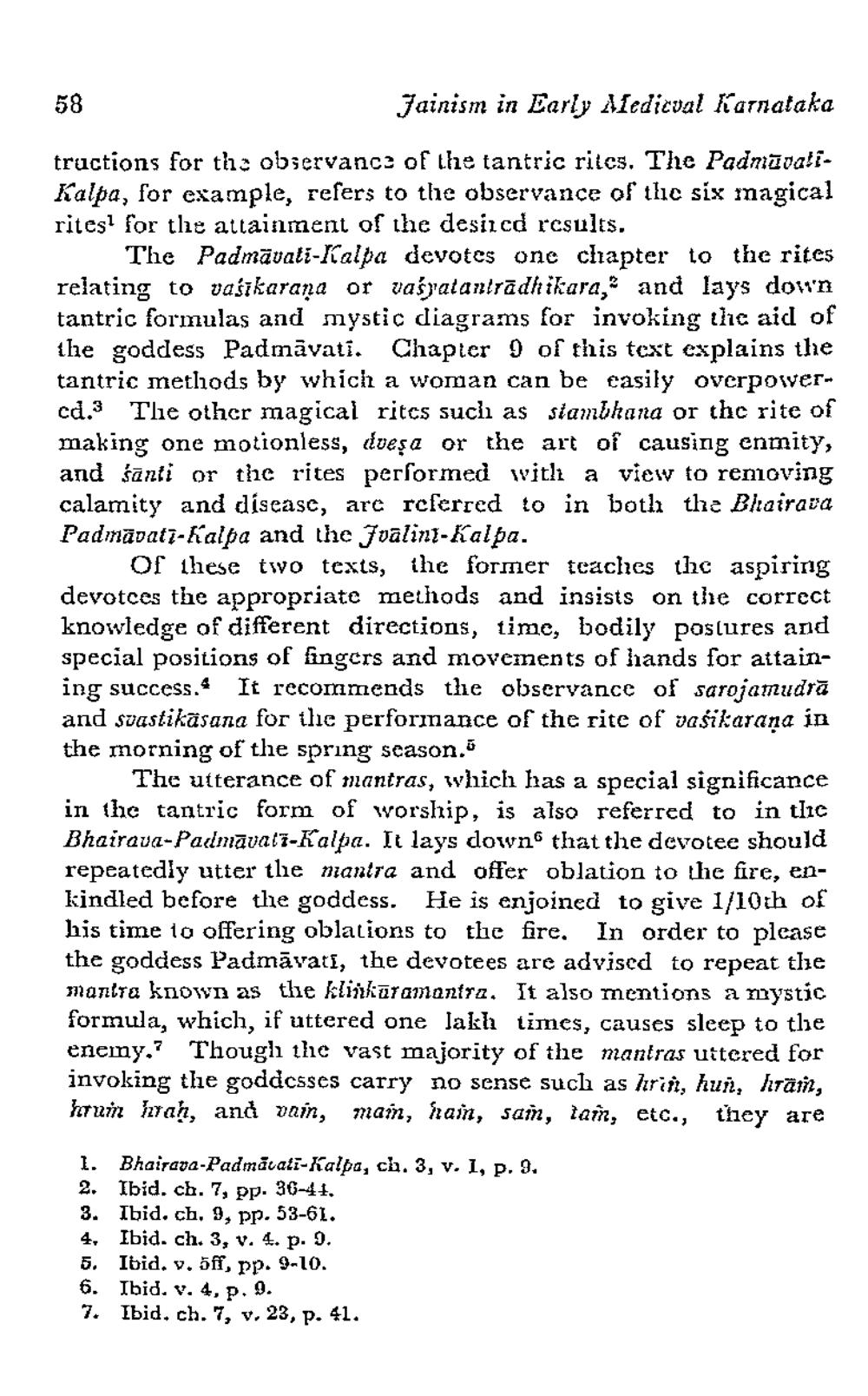________________
58
Jainism in Early Asedicval Karnataka
tructions for the observance of the tantric rites. The PadmavaliKalpa, for example, refers to the observance of the six magical rites for the attainment of the desired rcsults.
The Padmavati-Kalpa devotes onc chapter to the rites relating to vašīkarana or vaśyatantradhikara," and lays down tantric formulas and mystic diagrams for invoking the aid of the goddess Padmāvati. Chapter 9 of this text explains the tantric methods by which a woman can be easily overpowercd.3 Tlie other magical ritcs sucłı as siambhana or the rite of making one motionless, dveşa or the art of causing enmity, and śānti or the rites performed with a view to removing calamity and disease, arc rcferred to in both the Bhairava Padmavati-kialpa and the Jvalini-Kalpa.
Of these two texts, the former teaches the aspiring devotces the appropriate methods and insists on the correct knowledge of different directions, timc, bodily postures and special positions of fingers and movements of hands for attaining success. It recommends the observance of sarojamudrā and svastikāsana for the performance of the rite of vasikarana in the morning of the spring season.
The utterance of mantras, which has a special significance in the tantric form of worship, is also referred to in tlic Bhairava-Padmāvai7-Kalpa. It lays down that the devotee should repeatedly utter the mantra and offer oblation to the fire, enkindled before the goddess. He is enjoined to give 1/10th of his time to offering oblations to the fire. In order to please the goddess Padmāvati, the devotees are advised to repeat the manita known as the klinkūramantra. It also mentions a mystic formula, which, if uttered one lakh times, causes sleep to the enemy. Though the vast majority of the mantras uttcred for invoking the goddesses carry no sense such as lirin, hun, hrain, bruin ah, and vain, main, ham, sam, tan, etc., they are
3.
1. Bhairava-Padmavati-Kalba, ch.3, v. 1, p. 9. 2. Ibid. ch. 7, pp. 36-41.
Ibid. ch. 9, pp. 53-61. 4, Ibid. ch. 3, v. 4. p. I. 5. Ibid. v. 5ff, pp. 9-10. 6. Ibid. v. 4, p. 9. 7. Ibid. ch. 7, v. 23, p. 41.




